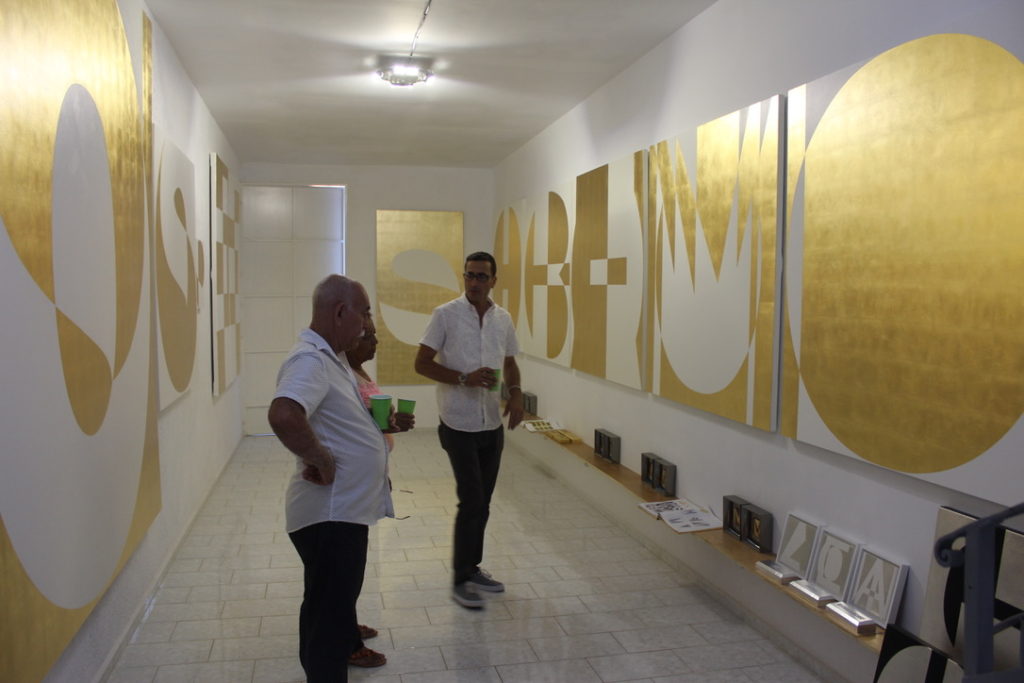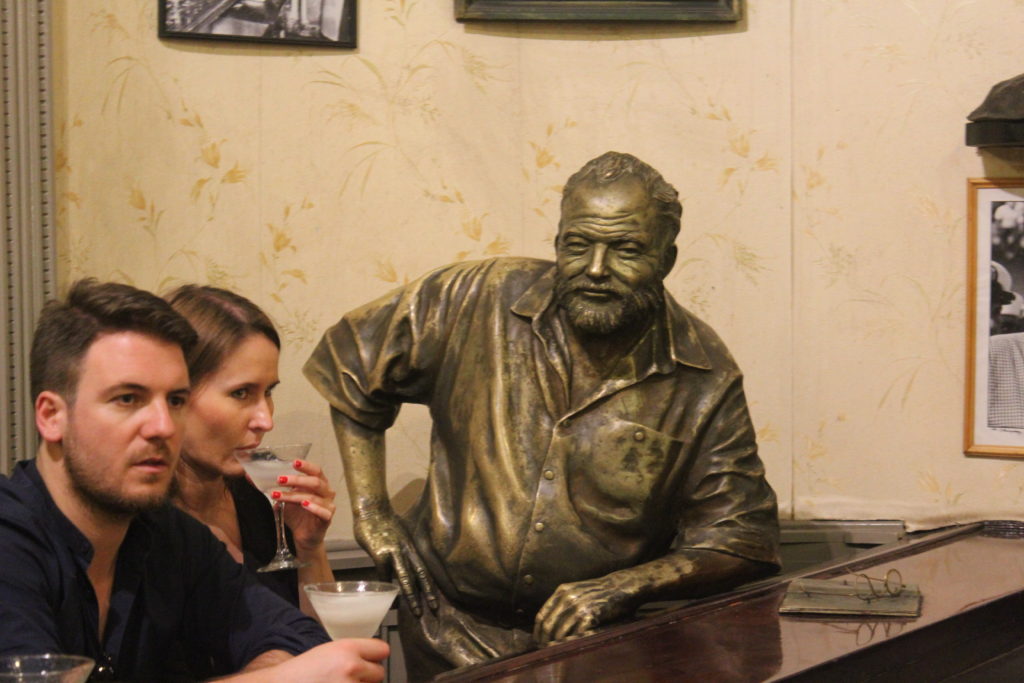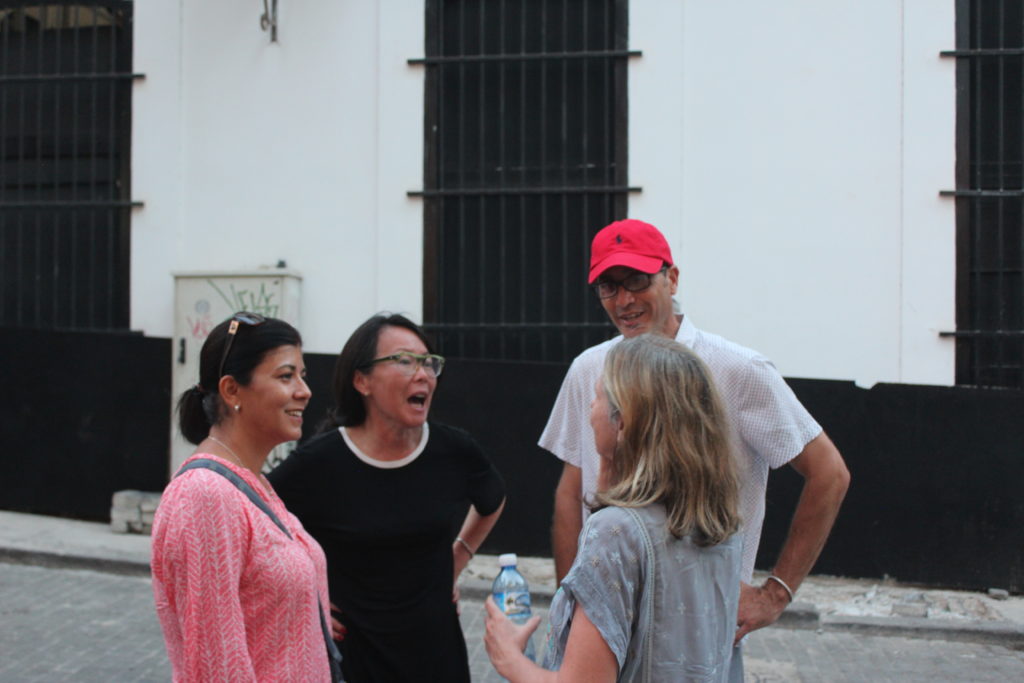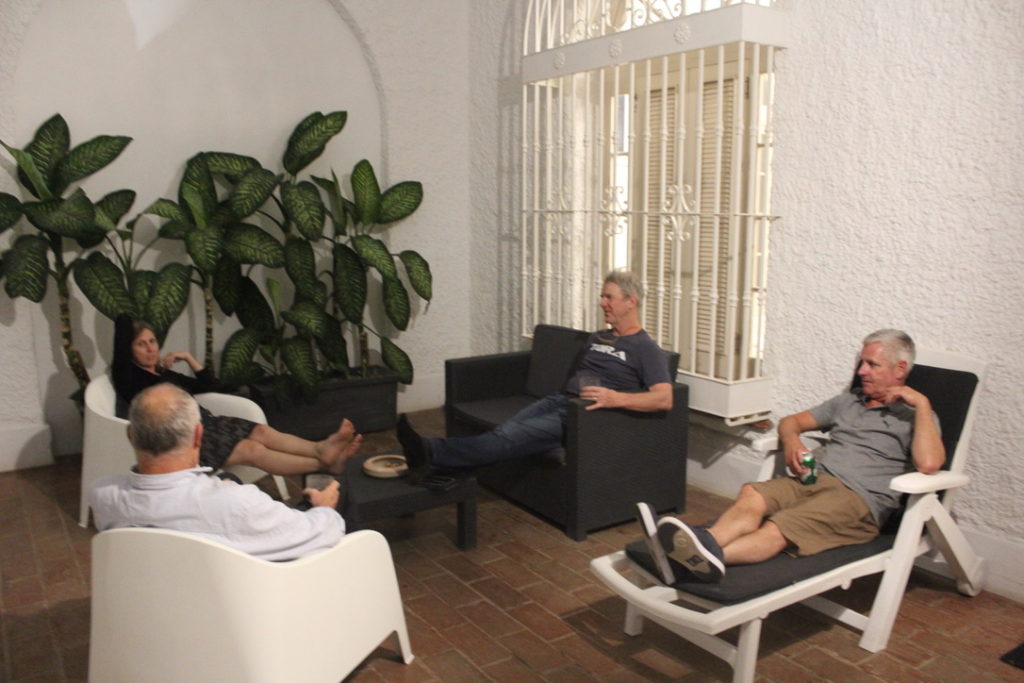April 10, 2019 — After obtaining our $100 visa and health insurance at the gate in Miami airport, we boarded the plane to Havana. The Miramar AirBnB was run by Miguel and Alexa, a delightful Italian couple who somehow found it easier to get a job as housekeepers in Havana than in Italy. The most obviously memorable sights in Havana are the 50’s vintage cars, mostly taxi’s – the product of 60 years of US economic embargo. General tourist trips to Cuba by US residents is not allowed. Trips must conform to one of 12 approved categories – ours was public displays (not the raincoat kind), since we were there for the Havana Biennial Art Festival, on the back of our brother-in-law Tom’s art gallery and representation of Cuban artists.
Havana was a mixture of beautifully renovated blocks and broken-down buildings frozen in time. The Cubans were hospitable, with some aggressiveness, typical of folks pushing to make a living off tourists. One-on-one folks (mostly taxi drivers) were friendly, although we came across some odd surliness which we put down to a lack of opportunity for a better life. Almost 60 years of US embargo has definitely stifled economic progress – while strengthening the resourcefulness of Cuban people – but it is hard to separate the effects of the embargo from the undercurrent of graft that reputedly funnels wealth from much economic activity to a small number of families on the island. Having said that, as a tourist – strike that – as participants in public art displays, we had a great time and were sorry to head back to the mainland after ten days.
Interesting epilogue was our wiring of funds to Tom after the trip to reimburse him for our share of the AirBnB expenses where we included a memo of “reimbursement of Cuba expenses”. The C word triggered an OFAC (Office of Foreign Assets Control) investigation, with multiple information requests (what do you mean by “Cuba”, why were you there, etc., etc.) which held up the wire for weeks. We were back in our own version of the Surveillance State.
























